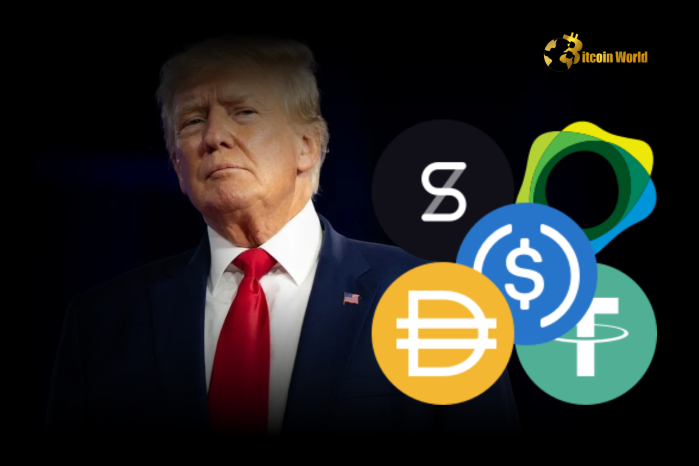Trump Administration Prioritizes Stablecoins Over CBDCs, Says Standard Chartered
According to Geoff Kendrick, Director of Digital Asset Research at Standard Chartered (SC), the Trump administration is expected to take a firm stance against the development of a Central Bank Digital Currency (CBDC). Instead, Kendrick predicts significant growth in the stablecoin market, driven by favorable policies and potential legislative support for major players like Tether (USDT) and Circle (USDC).
Trump’s Opposition to CBDCs
1. A Consistent Stance Against CBDCs
- President Trump has historically opposed the idea of a CBDC, citing concerns over government overreach and privacy infringement.
- Trump’s previous statements suggest that he views CBDCs as a threat to the U.S. dollar’s dominance and individual freedoms.
2. Stablecoins as an Alternative
- Unlike CBDCs, stablecoins are privately issued digital currencies pegged to traditional assets, such as the U.S. dollar.
- Standard Chartered’s report highlights that the Trump administration may see stablecoins as a more market-friendly and less intrusive option for fostering digital currency innovation.
The Rise of Stablecoins Under Trump
1. Legislative Support for Stablecoins
Kendrick predicts that a Stablecoin Bill could pass within months of Trump taking office.
- This legislation may provide a regulatory framework for stablecoin issuers, ensuring compliance and consumer protection.
- Major stablecoins like USDT and USDC are likely to benefit from increased legitimacy and adoption.
2. Enhanced Market Guarantees
- Kendrick suggests that the bill could introduce guarantees for reserve-backed stablecoins, further boosting confidence in their reliability.
- Such measures could encourage institutional investors to adopt stablecoins as a secure and scalable solution for digital transactions.
Potential Impacts on the Crypto Market
1. Boost in Stablecoin Adoption
- Clear regulations and government backing could drive the mass adoption of stablecoins in both retail and institutional markets.
- Stablecoins may gain traction as a preferred medium for cross-border payments and financial services.
2. Shift Away from CBDCs
- With the U.S. opting out of CBDC development, other countries may follow suit, particularly those influenced by U.S. financial policies.
- The Trump administration’s focus on stablecoins could set a precedent for private-sector-driven innovation in digital currencies.
3. Competitive Advantage for USDC and USDT
- As established players in the stablecoin market, Circle (USDC) and Tether (USDT) stand to gain significantly from supportive policies.
- Enhanced guarantees and regulatory clarity could position these stablecoins as global leaders in digital currency.
Challenges and Risks
1. Regulatory Hurdles
- Despite the potential for legislative support, the stablecoin market faces scrutiny from regulators concerned about financial stability and illicit use.
- The proposed bill must address these concerns to gain bipartisan support and ensure a smooth implementation.
2. Market Competition
- New entrants to the stablecoin market may emerge, challenging the dominance of USDC and USDT.
- Ensuring interoperability and transparency will be key to maintaining market leadership.
3. Global Implications
- The U.S.’s rejection of CBDCs may leave room for other countries, such as China, to dominate the space with their Digital Yuan.
- This could impact the U.S. dollar’s role as the global reserve currency.
Expert Opinions on Trump’s Approach
Geoff Kendrick, Standard Chartered
Kendrick emphasizes the potential for stablecoins to thrive under Trump’s administration:
“With the Stablecoin Bill likely to pass, USDT and USDC may see unparalleled growth and adoption within months.”
Other Industry Analysts
- Some experts argue that Trump’s opposition to CBDCs aligns with his pro-business stance, favoring private-sector innovation over government-led initiatives.
- Critics, however, warn that the lack of a U.S. CBDC could weaken the country’s competitive edge in the evolving digital economy.
What Lies Ahead for Stablecoins?
1. Increased Adoption Across Industries
- Stablecoins are poised to play a significant role in industries such as e-commerce, remittances, and decentralized finance (DeFi).
- Their ability to provide low-cost, fast, and secure transactions makes them an attractive alternative to traditional payment methods.
2. Integration with Financial Institutions
- Major banks and payment processors may begin integrating stablecoins into their systems, further solidifying their role in the global financial ecosystem.
3. A Path to Mainstream Acceptance
- Legislative support and regulatory clarity could position stablecoins as a bridge between traditional finance and the digital economy.
Conclusion
The Trump administration’s anticipated focus on stablecoins over CBDCs marks a significant shift in U.S. digital currency policy. By fostering private-sector innovation and providing regulatory support, Trump’s approach could drive stablecoin adoption to new heights, benefiting established players like USDT and USDC.
However, challenges remain, from regulatory hurdles to global competition. Navigating these complexities will be critical to ensuring the success of stablecoins in a rapidly evolving financial landscape.
To learn more about innovative startups shaping the future of the crypto industry, explore our article on latest news, where we delve into the most promising ventures and their potential to disrupt traditional industries.
Disclaimer: The information provided is not trading advice, Bitcoinworld.co.in holds no liability for any investments made based on the information provided on this page. We strongly recommend independent research and/or consultation with a qualified professional before making any investment decisions.


